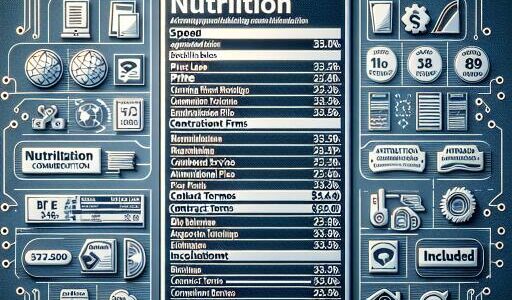Exploring the Horizon of Digital Equity Through the Latest NTIA Broadband Insights
Digital equity – ensuring all communities have access to and can effectively use necessary broadband services – is at the forefront of federal efforts. A significant milestone in this journey is the recent unveiling of a comprehensive report and dashboard by the National Telecommunications and Information Administration (NTIA), focusing on the fiscal year 2022’s federal broadband initiatives.
A Deep Dive into the 2023 Federal Broadband Funding Report
The 2023 Federal Broadband Funding Report is the latest outcome of the ACCESS BROADBAND Act’s mandate, showcasing intriguing trends in government’s financial commitment towards establishing a digitally equitable society. This analysis provides an exhaustive look at the efforts spanning across 12 agencies and enveloping 70 federal internet programs, inclusive of tribal broadband endeavors and vital state-level perspective. Furthermore, the intricacies of Congress’s budget allocations, alongside the concrete figures on awarded and already disbursed funds over three fiscal years starting from FY 2020, come to light.
Notably, the report uncovers that federal agencies earmarked a staggering $64.3 billion for high-speed internet initiatives in FY 2022 alone. This amount signifies an impressive 120 percent surge from the preceding year, illustrating a bolstered determination to bridge the digital divide.
Enhancing the report’s utility, the NTIA also provides downloadable data, comprehensive data notes, and a user-friendly guide, ensuring stakeholders can easily navigate through the information.
NTIA’s Wired for Growth
The endeavors of NTIA’s Office of Internet Connectivity and Growth deserve accolades for gathering this crucial data. Their focus spans from broadband infrastructure deployment to digital inclusion strategies and the aiding of broadband data mapping and strategic planning.
This effort builds upon previous measures such as the March 2023 ACCESS BROADBAND Dashboard, crafted to display the localized impact of broadband investment, echoing the administration’s ongoing commitment to transparently showcasing the fruits of federal broadband funding.
Sharpening the Competitive Edge of Wireless Innovation
In addition, the NTIA has spotlighted the flourishing interest in the $1.5 billion Wireless Innovation Fund. A deluge of 227 applications, seeking over $2.94 billion in assistance, was registered for the second round of funding. This eagerness surpasses the available funds, underscoring the vibrant competition and innovation in the field. To date, the program has blessed more than $140 million to pioneering projects.
State-Level Strategies and Support from the Fiber Broadband Association
The Broadband Equity, Access, and Deployment (BEAD) program is another pillar in the United States’ digital equity framework, with several states receiving approvals for their initial funding proposals. This program underlines a momentous bipartisan infrastructure effort, allocating billions to states for broadband expansion, with recent approvals unlocking significant funds for states such as Arizona, Missouri, Montana, and others.
Mirroring the broad spectrum of support for broadband initiatives, the Fiber Broadband Association (FBA) has introduced a unique membership program aimed at state broadband offices (SBOs). This initiative offers invaluable resources, from networking opportunities to specialized training, bolstering the nationwide pursuit of universal connectivity.
Universal Service Fund’s Role in Shaping Digital Equity
The National Digital Inclusion Alliance (NDIA) recently spotlighted the Universal Service Fund’s (USF) modernization and its potential to enhance the Affordable Connectivity Program, demonstrating the ongoing efforts to refine and expand policies for greater digital inclusion.
Local Initiatives Making a Mark
At the municipal level, initiatives like San Francisco’s SF Bridge Digital Equity Programs highlight the concrete steps cities are undertaking to diminish the digital divide. Granting significant funds to community organizations, these programs aim to provide essential digital skills and access to underrepresented communities, an endeavor mirrored across the nation.
As the landscape of digital equity evolves, federal, state, and local efforts converge to ensure that broadband access, a cornerstone of modern society, is a universal right rather than a privilege. The NTIA’s report and ongoing initiatives across various levels of government and industry underscore a concerted effort to bring this vision to fruition, one broadband connection at a time.










